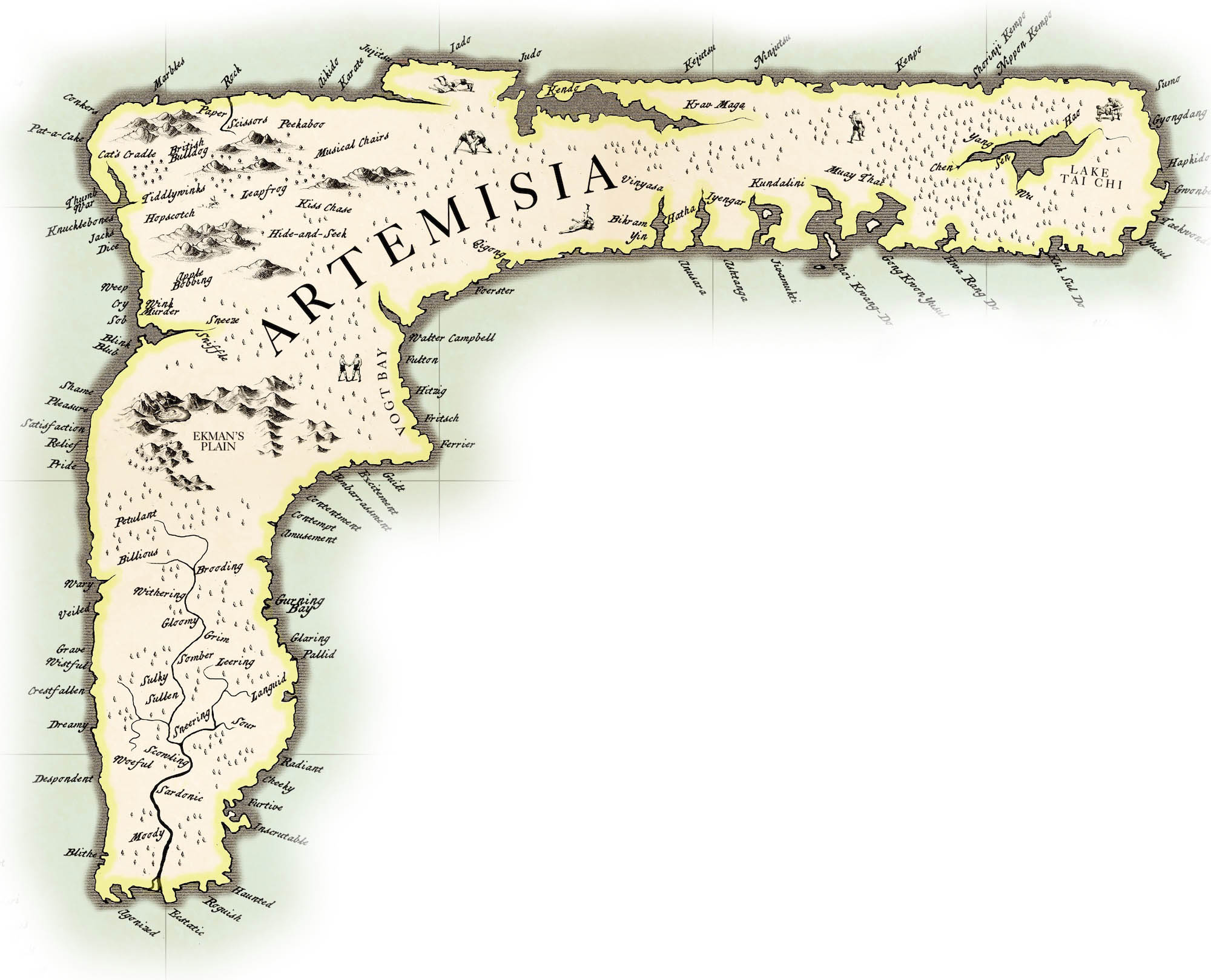Click on the map to learn more
Named after the Greek Goddess of the hunt, Artemis, this continent represents the Motor Cortex, the part of the brain involved with controlling the muscles.
Like Epidermia, the sensory cortex, this area of the brain has a direct topological relationship with groups of muscles. Some of the largest areas of the cortex are associated with controlling the hands and the face.
Cognitive Scientists
Some of the earliest work on this brain area was carried out by Alfred Walter Campbell and Cecile Vogt mapping out the cortical areas involved with movement, mainly through zapping monkey brains with electricity and seeing what happened.
Childhood Games
The physical play of childhood is where we learn to use our bodies in the world, and in interaction with other children. Many of these games now seem nostalgic, despite being played for centuries. They have fallen by the wayside as the world is deemed more dangerous and children play indoors.
Martial Arts
Since our earliest hominid ancestors first stood upright we've been fighting each other. We have more in common with the violent Chimpanzee than the affable Bonobo. This desire for combat has morphed into many disciplines, often incorporating elements of mental control, along with physical prowess.
Yoga
The practice of Yoga aims to align the body and spirit through physical poses and meditation.
These days it is perhaps more commonly seen primarily as a method of exercise and relaxation in the West, but it's roots are over 5000 years old.
Lake Tai Chi
Tai Chi is considered a martial art, yet the lay association is with the exercises in bodily control seen in public parks around the world.
Ekman's Plain
Paul Ekman is an American Psychologist best known for his study of facial expressions and emotion. His research led him to investigate the perception of facial expressions across the world, finding a core set of basic emotions encoded in the face and body: Amusement, Contempt, Contentment, Embarrassment, Excitement, Guilt, Pride in achievement, Relief, Satisfaction, Sensory pleasure, and Shame.
Facial Expressions
A large part of the motor cortex is dedicated to the control of the face, it is the canvas upon which we display (or conceal) our emotions. Each of these emotional states can be detected through expression alone.
